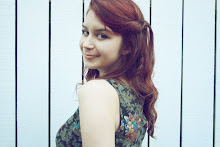Its about time I put what I want to do for my FMP into words- before I trap myself into listing a mess of approaches and ideas.
Basically, I want to work with the text Kalevala. The Kalevala is a Romantic Epic set in Ancient Finland. It was only collated (by Elias Lönnrot) in 1849, before which it was passed on by oral tradition. Not only has the Kalevala impacted all elements of Finnish culture, it provoked the nationalism leading to Finnish independence in 1917. Published at a time of severe Russification, when any ambitious Finn had no chance of success with a Finnish name, The Kalevala was a source of pride when such sentiments were unheard of.
"A nation that had created the Kalevala, they repeatedly told themselves, was not destined to die." William A Wilson The Kalevala been the inspiration for nearly all of Finlands artistic achievements, such as the music of Jean Sibelius, and the paintings of Axel Gallen Kallela. Interest in the Kalevala continues to accelerate, making its way to pop culture in the form of music and even Kung fu movies, and outside the borders of Finland. For example, J.R.R.Tolkein based many of his characters directly from the Kalevala, his interest highlighted by the fact that he even learnt Finnish so that he could read the text in its original form.
The following extract from Atenuem Gallery directer shows an interesting viewpoint on the relationship between the Kalevala and Finnish culture :
"There is no 'right-way' to interpret the Kalevala. The epic has meant many different things at different times, and has given rise to a wide range of powerful interpretations. Reading the work creates personal images, and its stories have personal meanings for each of us. In any case, as part of the history of Finnish art, works based on the Kalevala have created have created clear ideas about what the epic 'looks like'. The Kalevala lives on in advertising, popular culture, music, and film. It continues to shape our ideas about Finland and what it means to be Finnish. One art form gives rise to another: Literature influences the visual arts." (Maija Tanninen Mattila, 2009)
I find that the Kalevala can hold important significance to those who aren't culturally obligated to relate to it. It is my opinion that the reason the work has survived, let alone been able to grow in popularity, is because the chracters and situations are strong steotypes and hold important lessons which are timeless. Similar stories to those which are in the Kalevala exist in all cultures. Though my opinion may be far fetched, I would like to think that the Kalevala is a manifestation of characters and their stories that will always survive the test of time because they will always be relevant to human nature, though sometimes under a different name.
I would like my FMP to have an interactive element, and if successful, have people relate to the characters on a personal level. I am surprised there is not a lot of work attempting to bridge the time gap- to encourage the interpretation of the Kalevala on a personal level. Right now, it seems creating a interactive 'final piece' would best achieve this. One significant obstacle to work around is the length of the text- i cannot possibly create a work of quality illustrating/communicating all 667 pages of the Kalevala in 6 weeks.
The idea of working with paper also interests me, as it seems it would be reflective of my thematic aim. Paper is an old and traditional medium, and by working it with modern techniques i may subtly hint at the purpose for the work. Also, I feel that working with a traditional medium would help put me into the right mindset for interpreting the Kalevala while I work.
an example from the Kalevala:
"Words shall not be hid
nor spells be buried;
might shall not sink underground
thought the mighty go."






